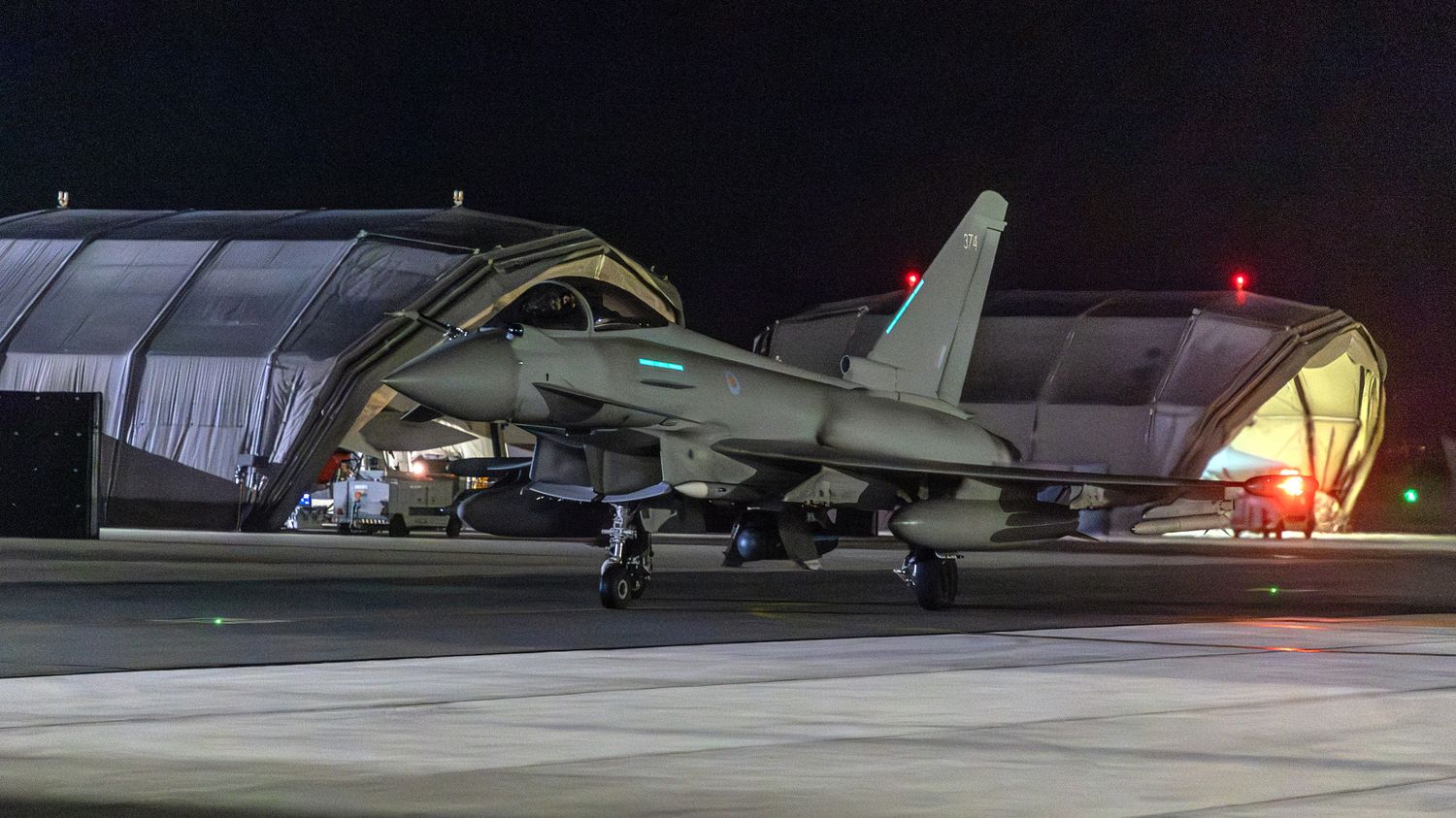Washington and London carried out a joint operation targeting the “missile, radar and drone capabilities” of the Iran-backed group. The Houthi rebels have been destabilizing maritime traffic for several weeks, in response to the Israeli military operation in the Gaza Strip.
Published
Update
Reading time: 5 min

The United States and the United Kingdom finally decided to intervene on Friday January 12 by carrying out airstrikes in Yemen. For several weeks, the Houthi rebels have increased attacks against maritime traffic in the Red Sea, in solidarity with the Palestinians in the Gaza Strip. The armed group claims to target commercial vessels linked to Israel. According to the American army, these rebels close to Iran have carried out, since November 19, 27 missile and drone attacks near the Bab el-Mandeb Strait separating the Arabian Peninsula from Africa.
What happened during the night from Thursday to Friday ?
The White House says it has targeted “missile, radar and drone capabilities”benefiting from the support of Australia, Canada, the Netherlands and Bahrain. Combat aircraft and Tomahawk missiles were used in the operation, according to reports from several American media, including the New York Times. During this joint operation, London announced that it had deployed four Typhoon FGR4 combat aircraft to strike the Bani and Abbs drone launch sites with laser-guided bombs.

The strikes targeted military sites in the Yemeni capital, Sanaa, and the governorates of Hodeidah, Taiz, Hajjah and Saada, the Houthi military spokesperson commented. Five people were killed and six others injured among the rebels, he added, counting “73 raids” of “the American-British enemy”.
How are these strikes justified ?
In a joint statement, Washington, London and eight of their allies, including Australia, Canada and Bahrain, stressed that the operation, carried out in a context of high regional tension, aimed to “de-escalation” and to “restoring stability in the Red Sea”. This American-British response comes after the Houthi firing on Thursday of a new anti-ship missile. “The United States has a special and historic obligation to help protect and defend these arteries of global commerce.”declared a senior White House official during a press briefing.
Before that, the head of American diplomacy, Antony Blinken, on tour this week in the Middle East, had issued a warning to the Houthis, with the UN Security Council demanding that they stop “immediate” of their attacks. Blaming the rebels for having ignored “repeated warnings from the international community”British Prime Minister Rishi Sunak described the strikes as “limited, necessary and proportionate measures in self-defence”.
What is the state of world trade ?
Houthi attacks with missiles and drones have pushed many shipowners to avoid the strategic Red Sea corridor, at the cost of increased costs and transport times between Europe and Asia. In total, more than a dozen shipping companies have diverted their ships around the Cape of Good Hope, according to the White House, due to the risk in the Red Sea. And saccording to the International Monetary Fund (IMF), volumes transiting off South Africa have already jumped by 67%.
Loïc Guermeur, former navigator of the national navy, shared this visualization of the evolution of container ship traffic over the past ten days.
How the #traffic of container ships was reoriented in 10 days, following the crisis in the Red Sea. pic.twitter.com/EAsoOsMsPu
— Loïc Guermeur 🌊⚓️🔱 (@CapHornier_) January 11, 2024
What arsenal do the Houthis have? ?
Houthi rebels use Typhoons, a redesigned version of Iran’s Qadr missiles, with a range of 1 600 to 1 900 km, Fabian Hinz, an arms specialist at the International Institute for Strategic Studies, explains to AFP. “They are not at all accurate – at least the versions that have been shown – but they can reach Israel.” Still according to this expert, the Yemeni armed group also has modified versions of the Iranian Quds cruise missiles, with a range of 1 650 approximately km.
The rebels claim to produce their own drones which, according to experts, use illegally imported Iranian components. But they also have Shahed-136 attack drones, with a range of 2 000 km and which are also used by Russia in its war in Ukraine, underlines Fabien Hinz. They also have in their arsenal the Samad-3, equipped with an explosive charge of 18 kg and a capacity of approximately 1 600 km, which has already struck targets in the Emirates and Saudi Arabia, according to experts.
What are the consequences in the region ?
“The United States and the United Kingdom must prepare to pay a high price and bear the heavy consequences of this aggression”, reacted the deputy foreign minister of the Houthis, Hussein al-Ezzi, quoted by the movement’s media. For its part, Iran condemned the American and British strikes on Friday, seeing them as “arbitrary action” and an “blatant violation of sovereignty” from Yemen. These strikes will have “repercussions on regional security”also warned Hamas, in a statement published on the Telegram channel of the Palestinian Islamist movement.
The United States had already deployed warships and set up an international coalition in December, “Prosperity Guardian” (“Guardian of prosperity”), to protect maritime traffic in this area where 12% of world trade passes. For several weeks, EU countries have also been studying the possibility of deploying a naval force. They will discuss it next week, AFP learned from diplomats. Spain has already indicated that it will not join the initiative.
